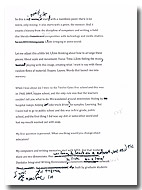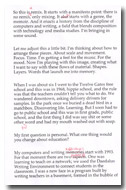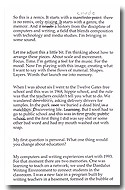Remix
After I delivered the project at the 2010 Computers and Writing Conference, Bill Wolff suggested some revisions. I wondered about the memoir genre. Bill suggested casting things as a remix. So began the next iteration of “Watch the Bubble.”
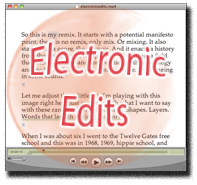 I reworked the script with
remix in mind, weaving in the concept of emergence. Remix adds the temporal to performance; there's past and present and rolling forward as performance becomes emergence.
Then I began to wonder
if differentiating between mixing and remixing would even be possible. Instead, we find performance and emergence feeding into and from each other.
Performance pushes with a kind of forward posture; emergence pulls with an almost reflective bent, then quickly slips forward again into performance.
There is mixing and remix but always more mixing. You can see some of my initial tinkering with these ideas in early script revisions.
I reworked the script with
remix in mind, weaving in the concept of emergence. Remix adds the temporal to performance; there's past and present and rolling forward as performance becomes emergence.
Then I began to wonder
if differentiating between mixing and remixing would even be possible. Instead, we find performance and emergence feeding into and from each other.
Performance pushes with a kind of forward posture; emergence pulls with an almost reflective bent, then quickly slips forward again into performance.
There is mixing and remix but always more mixing. You can see some of my initial tinkering with these ideas in early script revisions.
I began printing out and revising the script multiple times. The revisions below show early adjustments that contextualize some of the references to the discipline of computers and writing. And the script shows me rethinking my philosophical take on the field, which we see in the reshaping of the closing. The video soundtrack in some ways dominates the end of the piece, and I wanted to increase the presence of the narrative text—to have the narration run longer and be more in the mix. So I began to dial up the manifesto, working the closing questions in the piece into a longer segment about what we will say when we have our say about education. (I'm writing this in November 2010.) I find more frustration seeping into the revisions. Perhaps this is more of the memoir. I'm tired of justifying joy in teaching, of placing the studio classroom in the basement, of worrying about what I might say. (Of course, I've since revised the piece again, giving it a more hopeful feel.)
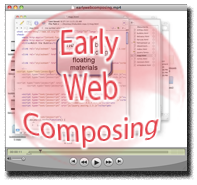 After a revised script emerged, the project went back to Camtasia for another round of adjustment.
And then, the composing of these Web materials began to shape things. I wanted a fixed screen project with floating windows.
The fancybox approach worked well, but it had issues with displaying a video player. I moved
the project videos to Vimeo. In some ways, those/these videos floating on the Web are the leading performative edge of the project.
After a revised script emerged, the project went back to Camtasia for another round of adjustment.
And then, the composing of these Web materials began to shape things. I wanted a fixed screen project with floating windows.
The fancybox approach worked well, but it had issues with displaying a video player. I moved
the project videos to Vimeo. In some ways, those/these videos floating on the Web are the leading performative edge of the project.
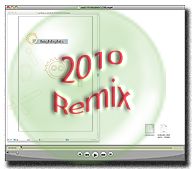
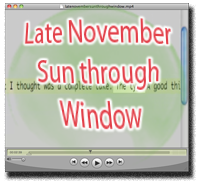 In November 2010, I took a break from remixing the main video and drafting Web pages and reflections. I wasn't
satisfied with where the piece concluded. I felt and wanted to feel some of the hurt in the performance.
But I also wished the piece had a more hopeful tone—less questioning and edgy. But performance (at that moment) fell short and
what had emerged became solid, a memory thread colored with emotions and stranded with ideas and
phrasings that had bubbled up during the composition over the months.
I produced a kind of companion piece, “Late November Sun Through Window,” which captures some of the tweaks and my thinking as the November 2010 iteration ceased.
In November 2010, I took a break from remixing the main video and drafting Web pages and reflections. I wasn't
satisfied with where the piece concluded. I felt and wanted to feel some of the hurt in the performance.
But I also wished the piece had a more hopeful tone—less questioning and edgy. But performance (at that moment) fell short and
what had emerged became solid, a memory thread colored with emotions and stranded with ideas and
phrasings that had bubbled up during the composition over the months.
I produced a kind of companion piece, “Late November Sun Through Window,” which captures some of the tweaks and my thinking as the November 2010 iteration ceased.
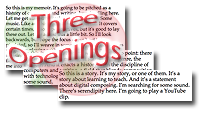 Now in November 2011, I have been revisiting the piece. I reworked the script to make it more open-ended.
The new opening segment recalls the earlier focus on memoir. The November 2010 version cast things as remix.
Now I just call the piece a story. And the early focus on the discipline of computers and writing has been tuned down. The piece is still a memoir and field history,
but it now tries to just be (and be about) digital composing.
Now in November 2011, I have been revisiting the piece. I reworked the script to make it more open-ended.
The new opening segment recalls the earlier focus on memoir. The November 2010 version cast things as remix.
Now I just call the piece a story. And the early focus on the discipline of computers and writing has been tuned down. The piece is still a memoir and field history,
but it now tries to just be (and be about) digital composing.
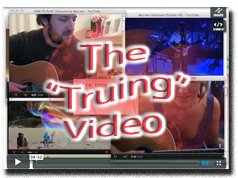 Part of the process of remixing “Watch the Bubble“ in 2011 can be attributed to work done with a new video called “Truing.” That video also plays with layers of sound and movement
and performance. Performing work on the new video fed back into remixing the script for “Watch the Bubble.”
At one point in the November 2011 version,
I found myself fidgeting with small changes to the script other than the reworked opening. Then an edit sparked a shift. I was not satisfied with the phrasing of, “The question is how now.”
I changed it
to, “The question is what to say.” That flowed right into “Seriously, what do we say now?” And that led to more words responding to the
question. These pen-on-paper sketches formed the basis for the revised closing and owe much of their emergence to the “Truing” video.
“Do we write these shapes by making them?” and “Do we blow them into being like glass?” reference time spent with the craft motifs of the “Truing” piece. And “Truing” lets us
“say to beauty, this is truth” and makes the piece more fully wrought with some of the poetic references layered into the scripts. The November 2011 version
emerges from the
piece that came after it.
I'd like to think the video also helped me change
the question “Will we?” to the truer phrase “We will.”
Part of the process of remixing “Watch the Bubble“ in 2011 can be attributed to work done with a new video called “Truing.” That video also plays with layers of sound and movement
and performance. Performing work on the new video fed back into remixing the script for “Watch the Bubble.”
At one point in the November 2011 version,
I found myself fidgeting with small changes to the script other than the reworked opening. Then an edit sparked a shift. I was not satisfied with the phrasing of, “The question is how now.”
I changed it
to, “The question is what to say.” That flowed right into “Seriously, what do we say now?” And that led to more words responding to the
question. These pen-on-paper sketches formed the basis for the revised closing and owe much of their emergence to the “Truing” video.
“Do we write these shapes by making them?” and “Do we blow them into being like glass?” reference time spent with the craft motifs of the “Truing” piece. And “Truing” lets us
“say to beauty, this is truth” and makes the piece more fully wrought with some of the poetic references layered into the scripts. The November 2011 version
emerges from the
piece that came after it.
I'd like to think the video also helped me change
the question “Will we?” to the truer phrase “We will.”
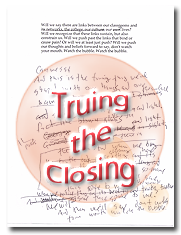
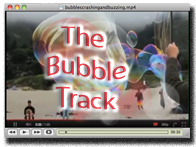 As I've worked on these projects, I've grown more comfortable thinking that scholarship can be
about response in its various (and mostly unpracticed) visceral and
personal forms. And I'm comfortable with substituting craft for
critique. I don't believe these are issues of mode. Crafting happens in
word or image or sound and such. I do, however, feel that digital
transformations create chances for changes and the
dangers are in the familiar scholarly grooves. Some of that is wrought into the
narration of a bubble video track that appears in “Truing,” although the only path to those
ruminations is here through the clip unraveled from its layers. And even that scholarly track is backed by music. Things are never single-layered. They are always rich and
harmonic. Truing and watching the bubble makes the scholarship overtly so.
As I've worked on these projects, I've grown more comfortable thinking that scholarship can be
about response in its various (and mostly unpracticed) visceral and
personal forms. And I'm comfortable with substituting craft for
critique. I don't believe these are issues of mode. Crafting happens in
word or image or sound and such. I do, however, feel that digital
transformations create chances for changes and the
dangers are in the familiar scholarly grooves. Some of that is wrought into the
narration of a bubble video track that appears in “Truing,” although the only path to those
ruminations is here through the clip unraveled from its layers. And even that scholarly track is backed by music. Things are never single-layered. They are always rich and
harmonic. Truing and watching the bubble makes the scholarship overtly so.
(Video Transcript for Electronic Edits)
(Video Transcript for Early Web Composing)
(Video Transcript for 2010 Remix)

